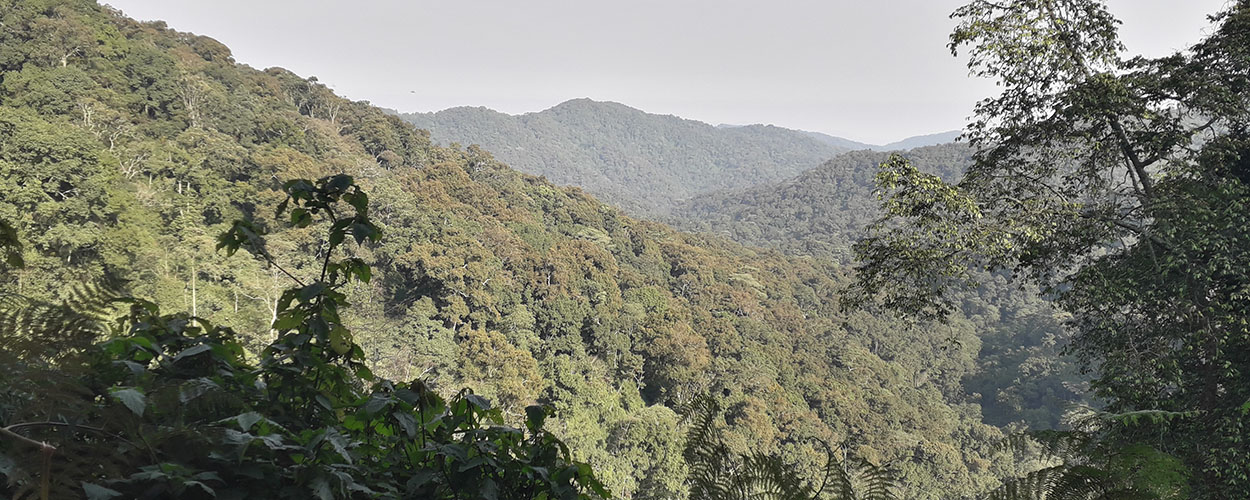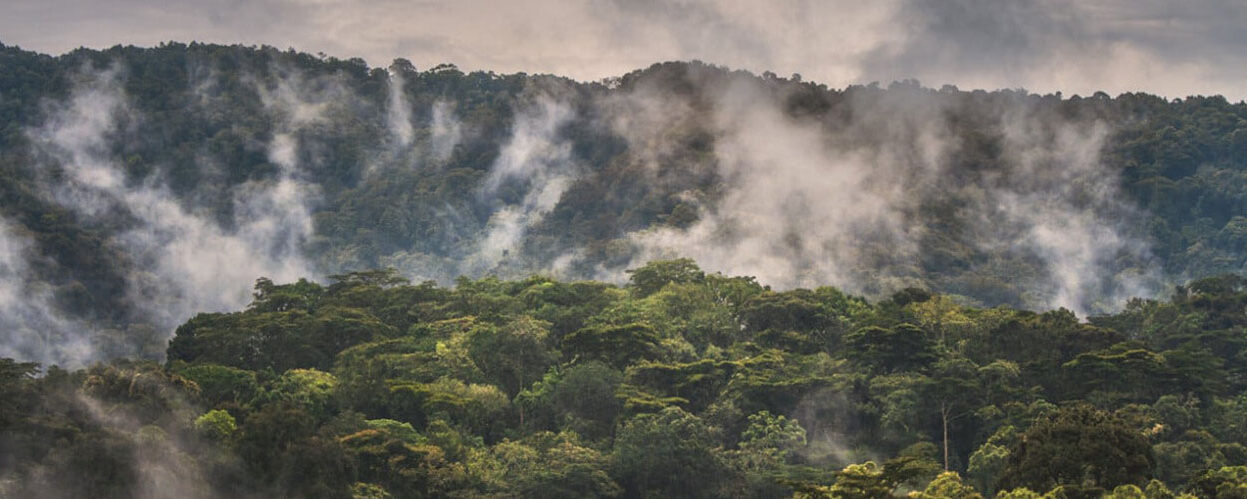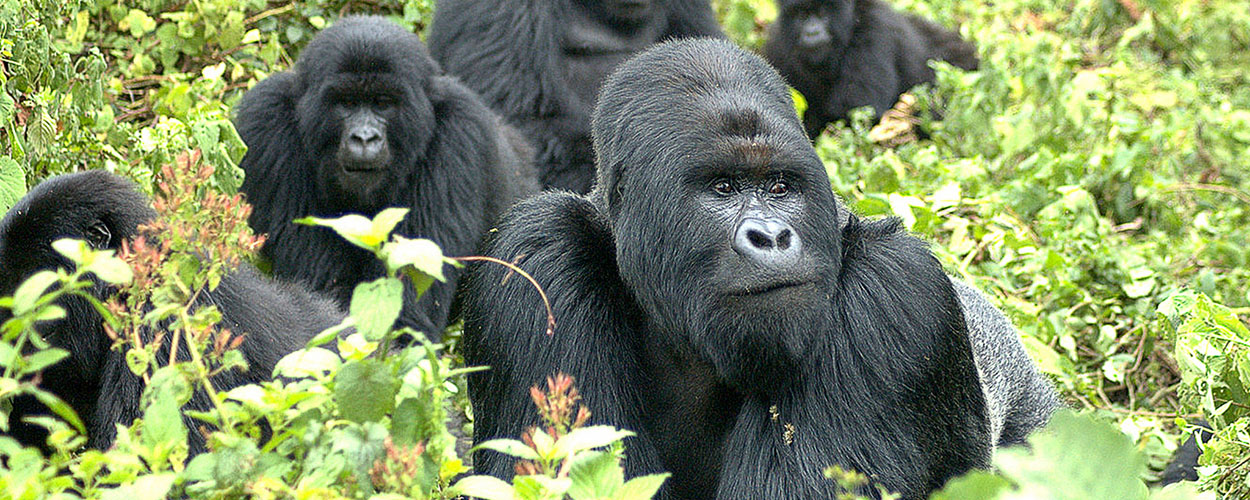Bwindi Impenetrable National Park, Uganda – Home to Mountain Gorillas
Bwindi Impenetrable National Park Uganda stands as one of Africa’s most remarkable and ecologically diverse rain forests. Covering an area of approximately 321 square kilometers in south western Uganda, this UNESCO World Heritage Site is renowned for its rich biodiversity, breathtaking landscapes, and the critically endangered mountain gorillas that call it home. Bwindi’s dense foliage, rugged terrain, and mist-covered hills create an awe-inspiring backdrop for adventurous travelers and conservation enthusiasts. The park is often referred to as the “Place of Darkness” due to the thick vegetation that allows little sunlight to penetrate, making it a truly impenetrable forest.
Established in 1991, Bwindi Impenetrable National Park has grown to become one of the most sought-after tourist destinations in Africa, attracting visitors from around the globe who seek an unforgettable wildlife experience. Beyond gorilla trekking, the park offers a blend of cultural experiences, birdwatching, nature walks, and a glimpse into the lives of the indigenous Batwa people who have lived in harmony with the forest for centuries.
The Remarkable Biodiversity of Bwindi
Bwindi Impenetrable National Park is a sanctuary of exceptional flora and fauna, making it a prime location for nature enthusiasts and researchers. It boasts over 120 species of mammals, 350 species of birds, 220 species of butterflies, and over 1,000 plant species, many of which are endemic to the region. The park’s high-altitude rainforest, ranging between 1,160 and 2,607 meters above sea level, provides a unique ecological environment that supports a wide variety of life forms.
Mountain Gorillas: Bwindi’s Star Attraction
The park is most famous for housing nearly half of the world’s remaining mountain gorillas (Gorilla beringei beringei), making it a crucial stronghold for the conservation of these magnificent primates. These gentle giants live in habituated family groups, allowing visitors to observe them in their natural habitat. Gorilla trekking, an activity that requires permits and is carefully regulated, provides an intimate encounter with these awe-inspiring creatures. Spending an hour in the company of a gorilla family, watching their interactions and behaviors, is often described as a life-changing experience.
Gorilla Tours in Bwindi Impenetrable Forest
Gorilla trekking in Bwindi is a challenging yet immensely rewarding adventure that requires physical stamina and patience. The trek can last anywhere between one to six hours, depending on the gorilla family’s location. The terrain is rugged, often involving steep climbs, muddy trails, and dense vegetation. Visitors must be well-prepared with what to pack for gorilla trekking including hiking boots, rain gear, long-sleeved clothing, insect repellent, and a good level of fitness.
1 Day Uganda Gorilla Safari from Kigali to Bwindi
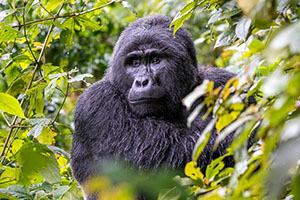 Embark on a thrilling one-day gorilla trekking adventure from Kigali to Bwindi. Cross into Uganda, track endangered mountain gorillas, and experience the beauty of Bwindi before returning to Rwanda.
Embark on a thrilling one-day gorilla trekking adventure from Kigali to Bwindi. Cross into Uganda, track endangered mountain gorillas, and experience the beauty of Bwindi before returning to Rwanda.
3 Day Gorilla Tour by Flying to Bwindi Impenetrable Forest
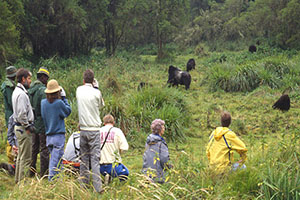 Fly from Entebbe to Bwindi for a three-day gorilla trekking safari. Save travel time, enjoy breathtaking aerial views, and spend quality time with Bwindi’s mountain gorillas in their natural habitat.
Fly from Entebbe to Bwindi for a three-day gorilla trekking safari. Save travel time, enjoy breathtaking aerial views, and spend quality time with Bwindi’s mountain gorillas in their natural habitat.
2 Day Gorilla Trekking in Bwindi from Kigali
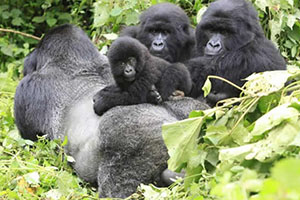 Enjoy a two-day gorilla trekking safari from Kigali to Bwindi. Meet the gentle giants of the forest, witness Uganda’s breathtaking landscapes, and relax in a scenic lodge before heading back to Kigali.
Enjoy a two-day gorilla trekking safari from Kigali to Bwindi. Meet the gentle giants of the forest, witness Uganda’s breathtaking landscapes, and relax in a scenic lodge before heading back to Kigali.
4 Day Gorilla Habituation Experience Safari in Bwindi
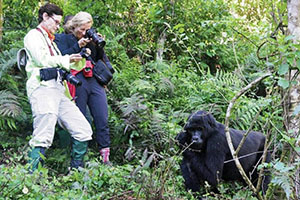 Immerse yourself in a unique four-day gorilla habituation experience in Bwindi. Spend extended time with a gorilla family, learn from researchers, and explore Uganda’s pristine rainforest on guided walks.
Immerse yourself in a unique four-day gorilla habituation experience in Bwindi. Spend extended time with a gorilla family, learn from researchers, and explore Uganda’s pristine rainforest on guided walks.
3 Day Gorilla Trekking Uganda from Kigali to Bwindi
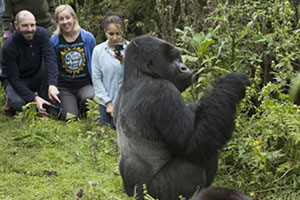
Experience a 3-day adventure from Kigali to Bwindi, featuring a memorable gorilla trek, cultural encounters, and stunning nature walks. Enjoy immersive wildlife experiences and comfortable lodging.
5 Day Bwindi Gorilla Trekking & Queen Elizabeth Safari
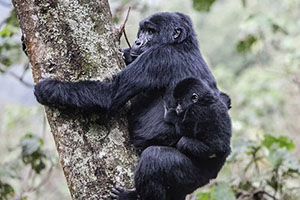 This five-day safari combines gorilla trekking in Bwindi with game drives in Queen Elizabeth National Park. Spot lions, elephants, and other wildlife while experiencing Uganda’s incredible biodiversity.
This five-day safari combines gorilla trekking in Bwindi with game drives in Queen Elizabeth National Park. Spot lions, elephants, and other wildlife while experiencing Uganda’s incredible biodiversity.
The Gorilla Trekking Process
The trekking experience begins early in the morning with a briefing at the park headquarters, where participants are assigned to different gorilla groups. Each group is led by experienced guides and trackers who navigate through the forest using their knowledge of gorilla movements. Once the gorillas are located, visitors spend a precious one hour observing their behaviors, social interactions, and feeding habits. It is essential to maintain a 7-meter distance, avoid direct eye contact, and follow conservation guidelines to ensure minimal disturbance to the gorillas.
Gorilla Trekking Permits and Costs in Bwindi Impenetrable National Park
Gorilla trekking in Bwindi Impenetrable National Park is a highly sought-after adventure that offers visitors a rare opportunity to observe mountain gorillas in their natural environment. To manage visitor numbers and minimize human impact on the gorillas, trekkers must obtain a permit issued by the Uganda Wildlife Authority (UWA). These permits regulate daily visits to designated gorilla families, ensuring a balance between tourism and conservation. The experience involves hiking through dense forests, guided by expert trackers who help locate the gorilla groups while educating visitors about their behavior, ecology, and conservation challenges.
As of 2025, the cost of a gorilla trekking permit varies depending on the visitor’s residency status. Foreign non-residents are required to pay $800 per person, while foreign residents (those living in East Africa with valid work permits) pay $700. East African citizens, including Ugandans, pay a significantly lower rate of UGX 250,000. These rates reflect the exclusivity of the experience and the high costs associated with gorilla conservation. Permits are usually in high demand, especially during peak seasons (June–September and December–February), so advance booking is highly recommended. The mentioned periods are also the best times for gorilla trekking in Bwindi forest as well as other mountain gorilla parks in Africa.
Justification of Gorilla Trekking Costs
The high cost of gorilla trekking permits is justified by the critical role these fees play in conservation and community development. A significant portion of the revenue supports anti-poaching patrols, habitat restoration, and veterinary care for sick or injured gorillas. Additionally, funds are allocated to local communities, improving infrastructure, education, and healthcare services, thus fostering positive relationships between conservationists and residents. The salaries of park rangers and guides, who risk their lives to protect gorillas from poaching and habitat destruction, are also covered through these fees. By purchasing a gorilla trekking permit, visitors directly contribute to the long-term survival of these majestic primates.
Gorilla Trekking Experience
The Gorilla Trekking Experience allows only 8 visitors per gorilla group per day, ensuring an intimate encounter. The trek lasts between 2 to 6 hours, depending on the gorillas’ location, and once found, visitors spend 1 hour observing them. Only individuals aged 15 and above can participate, as the trek is moderately to strenuously challenging, requiring hiking through dense forest.
Gorilla Habituation Experience
The Gorilla Habituation Experience in Uganda is a unique opportunity for those who want more time with gorillas, allowing visitors to spend up to four hours with a semi-habituated gorilla group in the Rushaga sector of Bwindi Impenetrable Forest. Unlike the ordinary gorilla trekking, which offers only one hour with the primates, this experience provides an extended and immersive encounter, giving participants a deeper understanding of gorilla behavior as they gradually become accustomed to human presence. Limited to just four visitors per day, the permit for gorilla habituation experience costs $1,500 per person and is ideal for wildlife enthusiasts, researchers, and photographers seeking a more intimate and educational gorilla interaction.
Gorilla Trekking Permit and how to Book it
The Uganda Gorilla trekking permits can be obtained through two main channels. The first option is booking directly with the Uganda Wildlife Authority (UWA), the government body responsible for wildlife conservation.
Alternatively, travelers can book through licensed tour operators, such as Animal View Safaris or other reputable tour companies. These operators not only secure permits on your behalf but also handle other logistics, including accommodation, transport, and guided tours. This option is convenient for those who prefer a hassle-free experience, as tour companies are well-versed in arranging seamless gorilla trekking adventures.
To increase your chances of securing a permit, it is advisable to book at least three to six months in advance, particularly during peak seasons from June to September and December to February. Additionally, choosing the right area out of the four Bwindi gorilla trekking sectors is essential, as each region offers a unique experience and varies in difficulty levels. The sectors in Bwindi include Buhoma, Rushaga, Ruhija, or Nkuringo. Your selection should be based on your fitness level and preferred accommodation options to ensure a memorable trekking experience.
Cultural Encounters: The Batwa People
Bwindi is not only a sanctuary for wildlife but also a cultural hub where visitors can engage with the indigenous Batwa people, also known as the “Forest Keepers.” The Batwa are the original inhabitants of the forest, having lived as hunter-gatherers before they were relocated following the park’s establishment. Today, they share their fascinating traditions, hunting techniques, and spiritual beliefs with visitors through cultural experiences, storytelling, and guided forest walks. Learning about their way of life offers a profound appreciation for the deep connection between humans and nature.
Other Activities in Bwindi
Nature Walks and Hiking in Bwindi
For those who seek a more relaxed exploration of Bwindi Impenetrable National Park, guided nature walks provide an opportunity to experience the park’s scenic beauty, waterfalls, and unique plant life. Unlike the strenuous activity of gorilla trekking, these walks allow visitors to appreciate the park’s biodiversity at a slower pace while engaging with the rich ecosystems of the forest. Several well-established trails cater to different interests and fitness levels:
- Munyaga River Trail – This short and easy Munyaga River Trail
is ideal for visitors who want to enjoy a quick nature walk. It follows the Munyaga River, providing chances to see birds, butterflies, primates, and waterfalls hidden within the dense forest. - Rushura Hill Trail – This moderate hike leads to Rushura Hill, which offers spectacular panoramic views of Bwindi’s thick forest canopy. On a clear day, hikers following Rushura Hill trail can see beyond Uganda’s borders into the Democratic Republic of Congo and Rwanda, with views of the Virunga Volcanoes and the Rift Valley.
- Ivy River Trail – One of the longer trails, the Ivy River Trail is perfect for those looking for a more immersive forest experience. It winds through lush vegetation, crossing rivers and open ridges, with occasional sightings of forest elephants, duikers, and an array of bird species. The trail also provides distant views of the majestic Rwenzori Mountains, also known as the “Mountains of the Moon.”
These nature walks are led by experienced guides who share insights about the park’s flora, fauna, and conservation efforts. Whether you are a birdwatcher, a nature photographer, or simply a traveler who enjoys peaceful hikes, Bwindi’s trails offer an unforgettable experience in one of Africa’s most ancient and biodiverse rainforests.
Community Visits in Bwindi
Beyond the incredible gorilla trekking experience, visitors to Bwindi Impenetrable National Park have the opportunity to engage with the surrounding local communities. These community visits offer a rich cultural experience and a chance to see firsthand how tourism positively impacts the lives of the people living near the park.
- Craft-Making Workshops
Visitors can participate in workshops where locals teach traditional craft-making skills such as basket weaving, beading, and wood carving. These handmade items, often sold as souvenirs, provide an essential source of income for community members, particularly women. - Traditional Dance Performances
Local cultural groups showcase traditional songs and dances that tell stories of their heritage, daily life, and celebrations. These performances, often lively and interactive, allow visitors to appreciate the rich cultural traditions of the Bakiga and Batwa people. - Coffee Tours
The region around Bwindi is known for growing high-quality Arabica coffee. Visitors can tour small coffee farms, learn about the coffee-growing process from planting to harvesting, and even participate in roasting and brewing their own cup of freshly made coffee. This experience not only supports local farmers but also offers insight into Uganda’s thriving coffee industry. - The Batwa Experience
The Batwa pygmies, the indigenous people of the forest, offer guided tours that showcase their ancient way of life, including hunting techniques, medicinal plant use, and storytelling. This tour provides an educational and emotional perspective on how they lived in harmony with the forest before it became a national park. - Local Community Projects
Some visits include tours of community-led projects such as schools, health centers, and conservation initiatives. These visits highlight how revenue from tourism supports education, healthcare, and environmental conservation in the region.
Why Participate?
- Cultural Exchange: Gain a deeper understanding of local traditions and customs.
- Support Sustainable Tourism: Tourism revenue directly benefits the local economy and conservation efforts.
- Memorable Experiences: Interacting with local communities adds a unique dimension to a visit to Bwindi.
Community visits in Bwindi are a meaningful way to connect with the local people while contributing to their livelihoods and cultural preservation.
Best Time to Visit Bwindi
The best time to visit Bwindi Impenetrable National Park is during the dry seasons, which run from June to August and December to February. During these months, the trails are relatively dry, making it easier for visitors to trek through the dense forest in search of the endangered mountain gorillas. The reduced rainfall also means that the chances of slipping or encountering muddy, slippery trails are minimal, allowing for a more enjoyable and less physically demanding experience. Additionally, the drier conditions improve visibility and make it easier to navigate through the thick undergrowth, ensuring that tourists can fully appreciate the beauty of the park’s rich biodiversity. This period is also the peak season for gorilla trekking, meaning permits tend to sell out quickly, so early booking is highly recommended.
On the other hand, the wet seasons, which occur from March to May and September to November, bring heavier rainfall, making the trekking trails more difficult to navigate. The park’s dense forest receives a significant amount of precipitation, leading to muddy and slippery conditions that can make the hike more challenging, especially for those who are not physically prepared. However, the wet season has its own unique appeal. The landscape becomes even more lush and vibrant, with fresh foliage and an abundance of blooming flowers. The misty atmosphere adds to the mystical beauty of Bwindi, creating a breathtaking backdrop for photography and wildlife viewing. Additionally, this period sees fewer visitors, meaning tourists can enjoy a more private and intimate experience with nature, and securing gorilla trekking permits is generally easier.
Regardless of the season, Bwindi remains a year-round destination for nature enthusiasts and adventure seekers. The choice of when to visit largely depends on individual preferences—whether one prioritizes easier trekking and peak-season encounters or prefers the solitude and dramatic scenery of the rainy season. For those aiming for the best overall experience, the dry seasons remain the most recommended periods due to their favorable trekking conditions and higher chances of encountering gorillas without the added challenge of heavy rains. However, those willing to embrace the elements during the wet season will be rewarded with a quieter, more immersive experience in one of Africa’s most enchanting rainforests.
Conservation Efforts and Challenges
Despite its protected status, Bwindi faces conservation challenges such as habitat loss, human-wildlife conflict, and poaching. Conservation organizations, in collaboration with the Ugandan government and local communities, work tirelessly to ensure the survival of the gorillas and the sustainability of the park. Community-based tourism initiatives, anti-poaching measures, and reforestation projects play a crucial role in preserving Bwindi’s fragile ecosystem.
Bwindi Impenetrable National Park is a true gem of Uganda, offering an extraordinary blend of wildlife encounters, cultural experiences, and stunning natural beauty. Whether you are trekking through the thick jungle to meet a majestic mountain gorilla, spotting a rare bird species, or engaging with the Batwa people, every moment spent in Bwindi is unforgettable. As one of the last refuges of the endangered mountain gorillas, Bwindi serves as a testament to the importance of conservation and sustainable tourism. A visit to this remarkable park is not just an adventure but a journey into one of the most pristine and awe-inspiring places on Earth.

